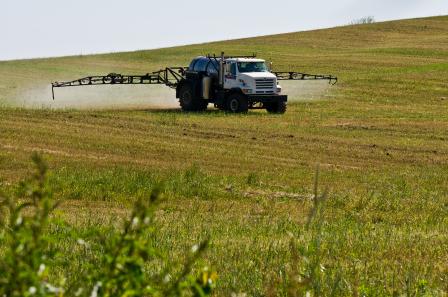Indicators: Atrazine
What is atrazine?
Atrazine is an herbicide widely used for control of broadleaf and grassy weeds. It is sprayed on row crops such as corn, sorghum and sugarcane, and in some areas is used on residential lawns. It has also been used on highway and railroad rights-of-way. EPA now restricts how atrazine can be used and applied.

Why is atrazine important?
Atrazine is a surface water and groundwater contaminant that can enter waterways in agricultural runoff from row crops. Atrazine may cause human health problems if present in public or private water supplies in amounts greater than the drinking water standard set by EPA. It can reduce primary production in aquatic communities by inhibiting photosynthesis, has been linked to adverse reproductive effects in amphibians and other wildlife, and is currently being studied as a potential endocrine disruptor and carcinogen to both aquatic and human life.
What can atrazine tell us about the condition of water?
The presence of atrazine in an aquatic system can signal stressed chemical and biological condition. Information on atrazine levels at a given site, in conjunction with other environmental factors, can help explain why a particular waterbody may experience lower productivity and less diversity in plant and wildlife communities than expected.
